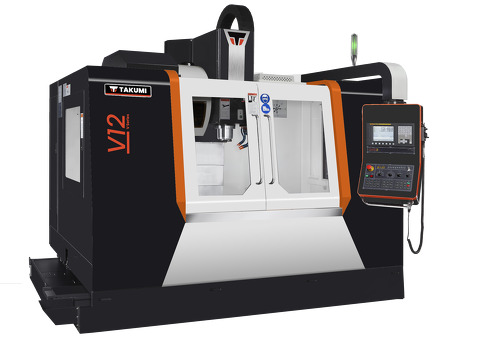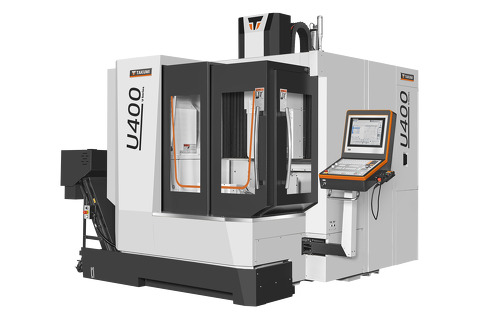With the DXF Converter, you can open DXF files directly on the TNC control and extract contours or machining positions. You not only save time otherwise spent on programming and testing, but you can also be sure that the finished contour is exactly according to the design engineer’s specifications. So why program contours when your drawing is already in DXF format anyway? Simply install the DXF Converter retroactively option on your control.
CAD Viewer enables the display of 2-D and 3-D models right on the TNC (e.g., DXF, STEP, or IGES files). Using the CAD Import option, you can easily incorporate contours and machining positions from these CAD files directly into your Klartext program. You can thereby reduce the amount of programming work and avoid input errors resulting from transposed digits, incorrectly placed decimal points, and the like.
In particular, extracting machining information directly from CAD data provides additional possibilities for creating NC programs with a tilted working plane. You can also define the preset on the 3-D model with a 3-D basic rotation. In addition, you can place a datum with the appropriate 3-D rotation on the desired working plane.
The working plane can be conveniently saved to the clipboard and transferred to the NC program with the proper transformation and relevant PLANE command. On the defined working plane, you can extract contours and machining positions, and transfer them to the NC program.
Selecting contours is very convenient: you can select any element by clicking on it with the mouse. Once you select a second element, the TNC detects your desired machining direction and initiates automatic contour detection. In doing so, the TNC automatically selects all clearly identifiable contour elements until the contour closes or branches out. This method lets you define elaborate contours with just a few clicks of the mouse. You can then easily copy the selected contour via clipboard to an existing Klartext program.
The CAD Import option is an expansion to the DXF Converter. All previous functions have been adopted and enhanced to include 3-D import functions. Nearly all of the common DXF, STEP, and IGES file formats can be used. The CAD Import option is available for the TNC 640, TNC 620, and TNC 320 controls.
Adaptive feed rate control option (AFC) from HEIDENHAIN optimizes the feed rate by taking the spindle power and further process data into consideration. AFC ensures that the maximum possible feed rate and thereby increases efficiency. It offers a number of benefits:
- Optimizing the machining time
- Tool monitoring
- Protection of the machine mechanics
The Dynamic Collision Monitoring (DCM) interrupts machining whenever a collision is imminent, thereby increasing the safety for the machine and its operator. This helps to prevent machine damage, which can result in costly downtimes. Unattended shifts become safer and more reliable.
However, DCM works not only in automatic mode but is also active in manual mode. If, for example, the machine operator is on a collision course during setup, the TNC detects it, stops axis movement, and issues an error message. Before actually machining a part, you can also check for collisions in the Test Run mode with a real preset and real tools.
Of course, the TNC also shows the ma-chine operator which machine components are at risk—both with an error message and graphically. If a collision warning is dis-played, then the TNC permits retraction of the tool only in those directions that will in-crease the clearance between the colliding objects.
The number of enabled control loops depends on the SIK or on additionally enabled control loops, which can also be ordered as needed later.
Further control loops can be enabled either as groups or individually. The combination of control-loop groups and individual control loops makes it possible to enable any number of control loops.
The HEIDENHAIN DNC option enables a Windows application to access and edit data from the TNC as needed. Possible fields of application include, for example:
- Software solutions that control the manufacturing process
- Machine and production data acquisition systems (MDA/PDA)
- Connection to higher-level ERP/MES systems
- Planning of preventive maintenance based on the actual condition of the machine
The Remote Desktop Manager option provides the user with the opportunity to operate one or more Windows PCs directly from the TNC. It offers complete integration of Windows PC operation in the user interface of the TNC control’s screen.
Potential applications include the central management of job orders, tools, and NC programs—all the way to remote operation of CAD/CAM systems from the machine. In this way, the machine tool operating panel becomes a flexible and efficient workplace for special manufacturing processes, including decentralized order processing.
The Expanded Tool Management option contains many new features that make the management of tools and magazines considerably more transparent. Loading and unloading processes can be managed by dragging and dropping with the mouse. A tool usage list states how long which tools have been in contact with workpieces, and clearly structured tables use color coding to indicate various tool statuses. In addition, all tools used in the selected program can be displayed in a tooling list.
Dynamic Precision – Machining Dynamically and with High Accuracy:
Increased productivity and cost reduction are preeminent goals of modern manufacturing enterprises. Demands for reduced scrap, faster machining times and avoidance of additional work steps or rework are closely related to these goals. In the conflict of interests between machining time, surface quality and workpiece accuracy, machine tool controls must therefore be capable of making an approach optimized for the milling machine and the manufacturing process.
Under the concept of Dynamic Precision, HEIDENHAIN describes a group of functions for TNC controls that dramatically improve the contouring accuracy of machine tools even at high feed rates and in complex contouring moves. The dynamic accuracy of a machine tools is determined by the feed-axis acceleration required in order to produce precise movement between the workpiece and tool.
When feed axes are accelerated, machine components can be deformed by inertia forces or even begin to vibrate. With Dynamic Precision, the dynamic errors at the Tool Center Point (TCP) that arise during machining are significantly reduced so that NC programs are run with better component accuracy and surface quality, and even noticeably faster.
Dynamic Efficiency – Working Efficiently and with Process Reliability:
Considerable potential lies in the efficient heavy machining—roughing at high cutting speed—but also in the machining of hard-to-cut materials like titanium alloys, nickel-based materials or stainless steel, which are standard materials in the aviation and aerospace industry. Heavy machining is primarily about removing as much material as possible in the shortest time. This is where many components of the machining process are pushed to their limits. So for this type of high-performance cutting, comprehensive process management is an indispensable prerequisite for quality and economy. The forces that result from the cutting process place an extreme load on the machine and tool. The goal must therefore be to optimize metal removal rates, maximize tool service life and minimize the machine load.
With the concept of Dynamic Efficiency, HEIDENHAIN offers innovative TNC functions that help the user to increase process reliability in heavy machining and roughing in order to improve efficiency.
Dynamic Efficiency comprises these three TNC functions:
- ACC (Active Chatter Control) – This option reduces chatter tendencies and permits greater infeeds
- AFC (Adaptive Feed Control) – This option controls the feed rate depending on the machining situation
- Trochoidal milling: Cycle for the roughing of slots and pockets in a way that eases the load on the tool and the machine





